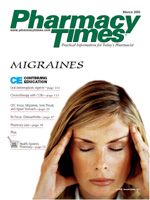Publication
Article
Pharmacy Times
Patient Compliance Difficult in OAB and SUI Markets
A recent urologist survey found that the average dropout rate for overactive bladder (OAB) medications was estimated at 35% in 2004. "On the positive side, this creates opportunities for new medications to make a mark in the market, either by satisfying unmet therapeutic needs or improving the side-effect and safety profile,"said Linda Liu, a research analyst for Frost & Sullivan, who conducted the survey.
Therefore, improved efficacy, enhanced safety profiles, and lower dosages are likely to play an important role in increasing compliance rates. Improving compliance rates and patient persistency is a challenging task for the OAB and stress urinary incontinence (SUI) markets because the intake of medication is based on the patient's perceived quality of life. Because physicians are the first contact for patients with OAB or SUI, pharmaceutical companies need to use training specialists when introducing drugs with different delivery modes. Direct-to-consumer advertising approaches are also building compliance, as well as educational and awareness campaigns.







